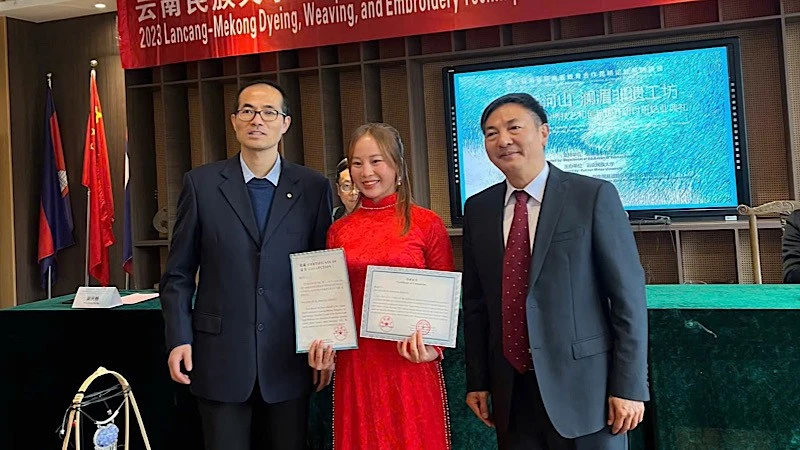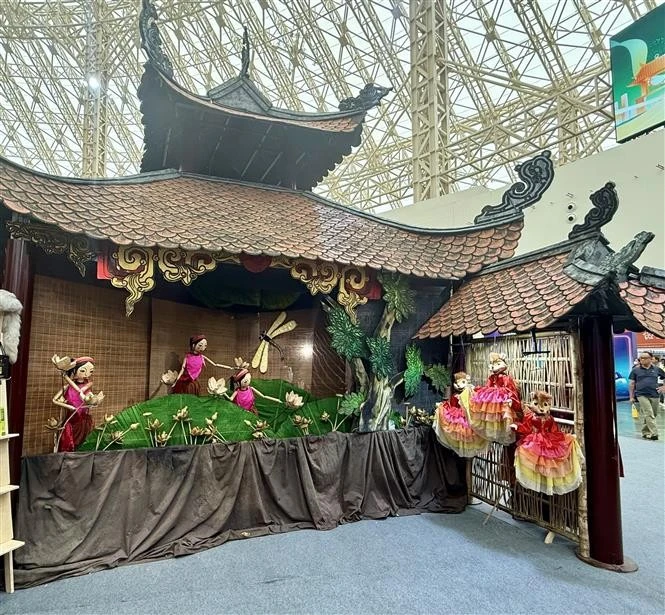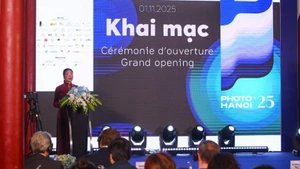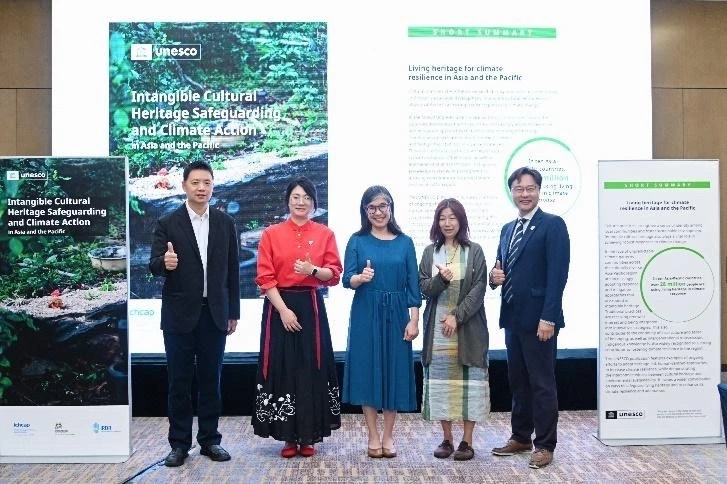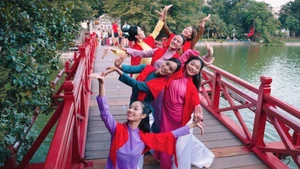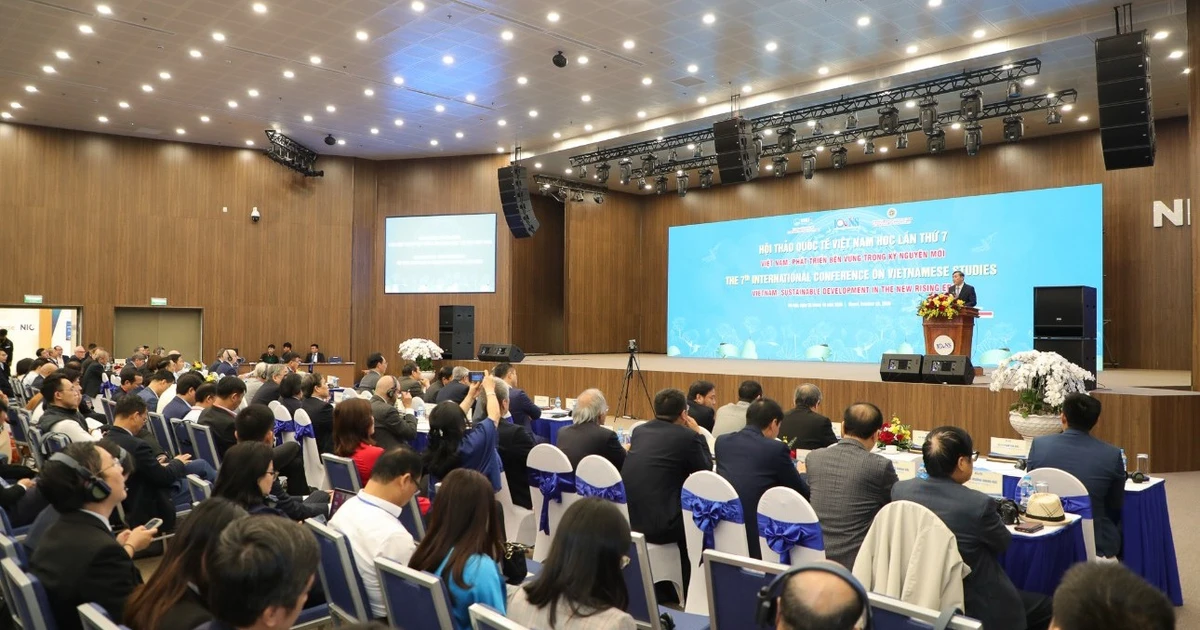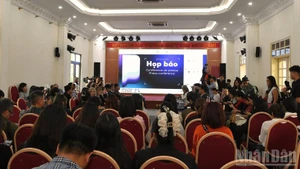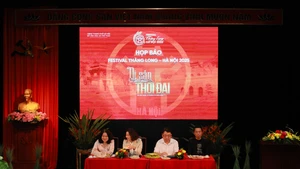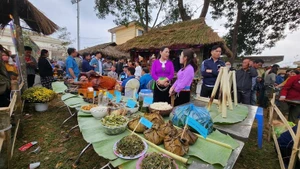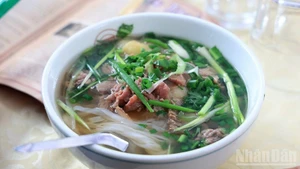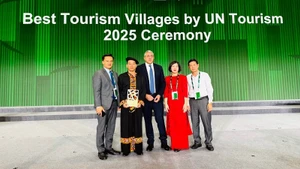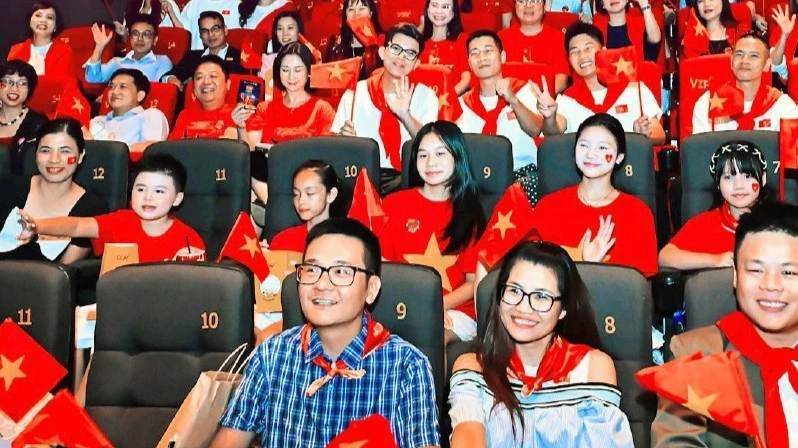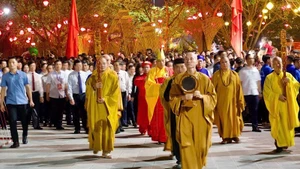Today, this young woman is patiently transforming her love for local culture into a livelihood project for her community, helping to bring H’Mong cultural values to the world.
As the first person in her village to attend university, Vang Thi De (born in 2002 in Nheo Lung Hamlet, Dong Van Commune, Tuyen Quang Province) deeply understands the gratitude owed to the community whose members pooled handfuls of rice and small coins to help her continue her education. She always reminds herself: “I go to school not only for myself, but for the whole village.”
Starting from a meagre Lunar New Year
The Hemp Hmong Vietnam project founded by De began in hardship. During the Covid-19 pandemic in 2020, she lost her job in the city and returned to her hometown, simply hoping to earn enough money to buy a few kilos of meat for the children that Lunar New Year.
Seeing the piece of hemp cloth her mother had carefully stored in a chest, she wondered, “Why does something so precious remain unknown to the world?” Her first order was worth only 650,000 VND, with a profit of merely 30,000 VND. Despite her mother’s protest, fearing the loss of a cherished heirloom, De was determined. Gradually, small orders came in; she travelled from village to village collecting fabric, at times borrowing money at high interest rates, even facing returned shipments — but she never gave up.
Thanks to those rolls of hemp, De supported herself for three years while living in Ha Noi. From there, a new thought grew: “I must repay the debt I owe to hemp fabric with a mission greater than survival.”
The Hemp Hmong Vietnam project soon evolved beyond selling hemp cloth, forming an entire value chain — from cultivating hemp plants, spinning, weaving, and indigo dyeing, to creating handicrafts, fashion, and home décor products.
The project has transformed the lives of many H’Mong women. Those who once had to work far from home can now care for their families while earning a living through weaving. For De, success is not measured by money, but by the bright eyes of villagers seeing their creations cross mountains to reach the world.
Ly Thi Cay from Pho Bang Commune shared: “Here, I live with the work I’ve loved since childhood. Though the income isn’t high, I’m far happier than when I struggled year-round with livestock. The most important thing is that the weaving craft of H’Mong women will not be forgotten.”
Bringing hemp fabric to the world
Beyond domestic recognition, the project’s products have also captivated international customers. De proactively shares the story of hemp fabric with the world through social media, writing emails in English to shops in Japan and Thailand, and personally seeking foreign partners. Through relentless effort, she has welcomed many international visitors to her workshop, where they can observe, touch, and even try the craft themselves.
Foreign visitors not only praise the durability and beauty of H’Mong hemp but also regard it as “a living work of art.” For them, wearing a piece of hemp fabric is to walk alongside the history and culture of the H’Mong people. Remarkably, international appreciation has changed local perceptions — once believing that hemp was only for H’Mong people, villagers now take pride in seeing it admired abroad.
During her years working with hemp, Vang Thi De has represented Viet Nam at numerous prestigious forums and conferences both at home and overseas. In 2023, she was Viet Nam’s sole representative at the Lancang-Mekong Intangible Cultural Heritage Workshop in China, alongside participants from four countries in the Mekong River basin. In 2024, she attended the Southeast Asia International Hemp Forum in Thailand. De has also joined various international fairs and seminars to broaden her perspective and expand partnerships.
In implementing her project, De has received much attention and encouragement from local authorities. Sung Thi Say, Director of the Dong Van Centre for Culture, Information and Tourism (Tuyen Quang Province), observed: “In the past, hemp weaving served only household needs, dowries, and spiritual practices. Thanks to De’s project, the craft has been revived and turned into a stable source of income. Moreover, it has raised community awareness of cultural values — every pattern and stitch carries the memory and identity of the H’Mong people.”
Vang Thi De’s journey is proof of the power of knowledge intertwined with love for cultural heritage. From rough hemp cloth, she has woven a story that both preserves the spirit of her people and opens doors to global integration for her homeland.
Looking ahead, De hopes to build a cultural space — a “living museum” dedicated to H’Mong hemp. She also plans to diversify products, from clothing, bags, and wallets to tea and other hemp-based items, so that the hemp plant can “thrive” in modern life.
In the next two years, her goal is to turn Hemp Hmong Vietnam into the largest hemp fabric supplier in Viet Nam for export. Above all, she hopes young people will realise that traditional crafts are not outdated — on the contrary, they can become a source of pride and a sustainable path to the future.
